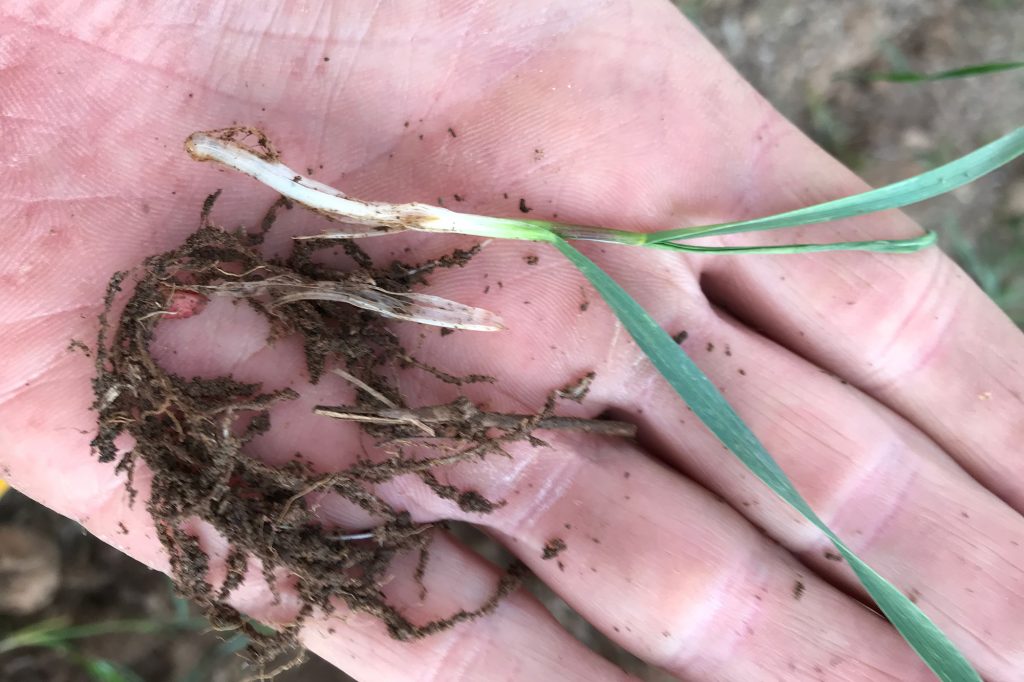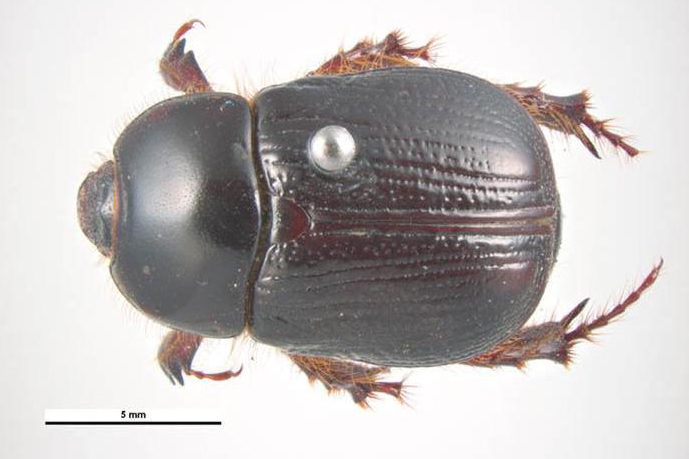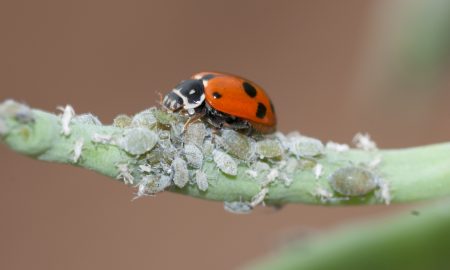African black beetle (Heteronychus arator) is a scarab that attacks a very wide variety of plants, from grasses to potatoes to blue gums. In particular, African black beetle is a notorious pasture pest, favouring ryegrass, tall fescue, kikuyu, and paspalum species.
But did you know that establishing cereals may also be vulnerable to attack by African black beetle?
This winter, African black beetle has been identified attacking a paddock of wheat near Echuca in Victoria’s Northern Country. The adult beetles were found in the seed rows, next to severed seedlings. The paddock was historically pasture, but had been in crop for the last 4-5 years.

How to identify African black beetle
One of the most common questions we are asked about African black beetle is how to identify it. Agricultural settings are home to numerous scarab species that may be categorised as pests, benign or even beneficial (such a dung beetles).
Here are some points to collectively consider when determining if you have African black beetle:
Are adults attacking?
African black beetle are damaging at both the adult and larval stage. This is different to other common scarab pests such as the redheaded pasture cockchafer, blackheaded pasture cockchafer, and yellowheaded cockchafers, which attack plants as larvae. Hence if you find plant damage and adult scarabs, this is a hint that it could be African black beetle.
Is it the right time?
Look at the life-stage of the beetle in question and see if matches the biology of African black beetle.
Adults lay their eggs in the soil in spring, and larvae emerge in 2-5 weeks depending on temperature and reach the most damaging third instar larval stage from mid-January to March. Larvae then pupate in the soil and emerge as adults, which go on to feed on pastures and crops throughout autumn, winter and spring.
Think shiny and smooth
Adult African black beetle are a shiny black to dark brown in colour.
The pronotum (middle section between the head and wing covers) on African black beetle in particular is very smooth, and there is no obvious pitting visible.
Similarly, the striations on the wing covers, are not heavily impressed.
The best way to demonstrate this is to compare African black beetle with the adult redheaded pasture cockchafer which has a pitted pronotum and deeply impressed striations on its wing covers (see below).


No bumps or bling
African black beetle may be mistaken with beneficial dung beetles which often occur in the same settings.
Dung beetles differ hugely in their appearance between species but often their pronotum is more circular in shape when viewed from above, and they often (but not always) have bumps, or ‘showy’ features such as horns or ridges, towards their anterior (front) end.
Compared to many species of dung beetles, African black beetle is very plain looking!

More information
Are you after more information on African black beetle (including management guidance)?
See our African black beetle PestNote and pasture-based factsheet developed by cesar for Dairy Australia.
Acknowledgements
Field observations
Daniel Andrews – Rodwells (Northern Country VIC)
Cover image: Photo by Andrew Weeks, Cesar Australia





